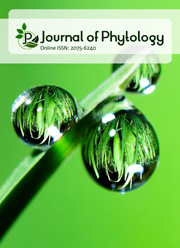Seaweed effects on plant growth and environmental remediation: a review
DOI:
https://doi.org/10.25081/jp.2021.v13.6903Keywords:
Seaweeds, plant growth, soil revival, drought, phycoremediationAbstract
Seaweeds are plants found in sea that have tremendous applications in the fields of agriculture and environment. It comprises of three giant classes with a large number of different species. their ability to adopt to various conditions qualifies them more applicable to various environmental and agricultural arena. Agriculturally, both three classes Phaeophyta, Rhodophyta and Chlorophyta, have significant roles in promoting plant growth and productivity and soil protection as well as reclamation with class Phaeophyta has highest contribution due to its alginic acid content and other multifaceted components that are higher followed by Rhodophyta and Chlorophyta. Seaweed (living or dead biomass) has ability to phycoremediate environment against heavy toxic metals and lessen the excessiveness of non-metal inorganic elements via physisorption, chemisorption with the aid of binding sites provided by proteins and carbohydrates functional groups existing in their cell walls and secretion of organic acids and intracellular transformation and accumulation. Seaweed is an important factor in environmental remediation and soil restoration processes.
Downloads
Published
How to Cite
Issue
Section
Copyright (c) 2021 Umar Aliyu Abdullahi, Mohammad Moneruzzaman Khandaker, Nadiawati Alias, Elyni Mat Shaari, Md. Amirul Alam, Noor Afiza Badaluddin, Khamsah Suryati Mohd

This work is licensed under a Creative Commons Attribution 4.0 International License.





 .
.